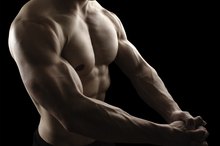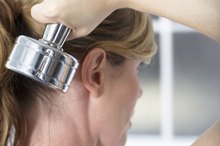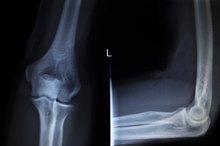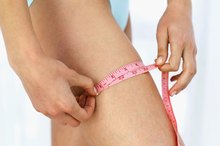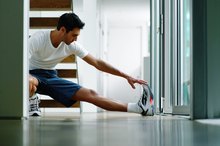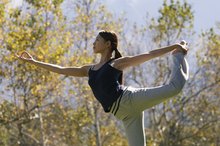Deadlifts and Groin Pain
The deadlift is a key strength-training move that builds muscle mass fast. Deadlifts involve lifting a barbell, dumbbells or kettlebells off the floor from a bending position, which engages multiple muscles all the way from the lower legs to the shoulders. When performed incorrectly, however, deadlifts can result in injuries -- especially to areas like the inner thigh's groin muscles.
Incorrect Posture
Your skeletal system gives your body structure and support. When in proper alignment, this structure -- with your skeletal muscles' help -- can hold varying amounts of weight, depending on your size and strength, by distributing the weight across your body. However, when you use improper posture -- such as too wide or too narrow of a stance, or pulling the bar up too far from the body -- you can place too much stress on certain areas; namely your groin muscles, resulting in injury.
Too Much Weight
Strain of the Pectoral Muscle
Learn More
Placing too much weight on the barbell when performing a deadlift may also contribute to a groin injury. Your inner thigh muscles can hold a varying amount of weight, depending on factors like your physical condition and current muscle mass. This means there is also a varying limit to how much weight the muscles can bear. If you place too much weight on the barbell, excessive resistance occurs on the muscle tissue of your groin, which can pull or stretch the muscles beyond their abilities. This can result in strains, and in rare cases, may cause a serious muscle rupture.
- Placing too much weight on the barbell when performing a deadlift may also contribute to a groin injury.
- If you place too much weight on the barbell, excessive resistance occurs on the muscle tissue of your groin, which can pull or stretch the muscles beyond their abilities.
Treatment
One main treatment for groin muscle pain is a combination of ice and rest. Applying ice to the groin muscles can help reduce swelling to promote healing, as well as help dull muscle pain. Resting the area helps prevent more damage from occurring and allows the muscle to heal and strengthen. The second avenue of treatment involves over-the-counter pain medications. Both acetaminophen and non-steroidal anti-inflammatory medications -- like aspirin, naproxen or ibuprofen -- can be used to help reduce groin pain.
- One main treatment for groin muscle pain is a combination of ice and rest.
- Applying ice to the groin muscles can help reduce swelling to promote healing, as well as help dull muscle pain.
Prevention
Causes of Pain on the Right Side Under the Arm
Learn More
You can prevent groin injuries in several ways when using deadlifts as part of your workout routine. First, ask a professional to teach you the correct form for deadlifting. A professional, such as a certified trainer, can monitor your form and see things you can't, and can correct posture or technique problems that often result in groin or other muscle injuries. Start with a lower weight and build to higher amounts when deadlifting. This gives the muscles time to adjust and builds the strength necessary to prevent further injuries. Strengthening the five main adductor muscles in the groin area through other exercises -- including the pectineus, adductor brevis, adductor longus, the gracilis and the adductor magnus -- can also help to prevent groin injuries.
- You can prevent groin injuries in several ways when using deadlifts as part of your workout routine.
- A professional, such as a certified trainer, can monitor your form and see things you can't, and can correct posture or technique problems that often result in groin or other muscle injuries.
Related Articles
References
- ExRx.net: Barbell Deadlift
- SportsInjuryClinic: Groin Strain
- StrongLifts.com: How to Deadlift -- The Definitive Guide to Mastering Technique
- Suarez JC, Ely EE, Mutnal AB, Figueroa NM, Klika AK, Patel PD, Barsoum WK. "Comprehensive approach to the evaluation of groin pain" J Am Acad Orthop Surg. 2013 Sep;21(9):558-70.
- Lynch TS, Bedi A, Larson CM. "Athletic Hip Injuries" J Am Acad Orthop Surg. 2017 Apr;25(4):269-279.
Writer Bio
Chris Sherwood is a professional journalist who after years in the health administration field and writing health and wellness articles turned towards organic sustainable gardening and food education. He now owns and operates an organic-method small farm focusing his research and writing on both organic gardening methods and hydroponics.
